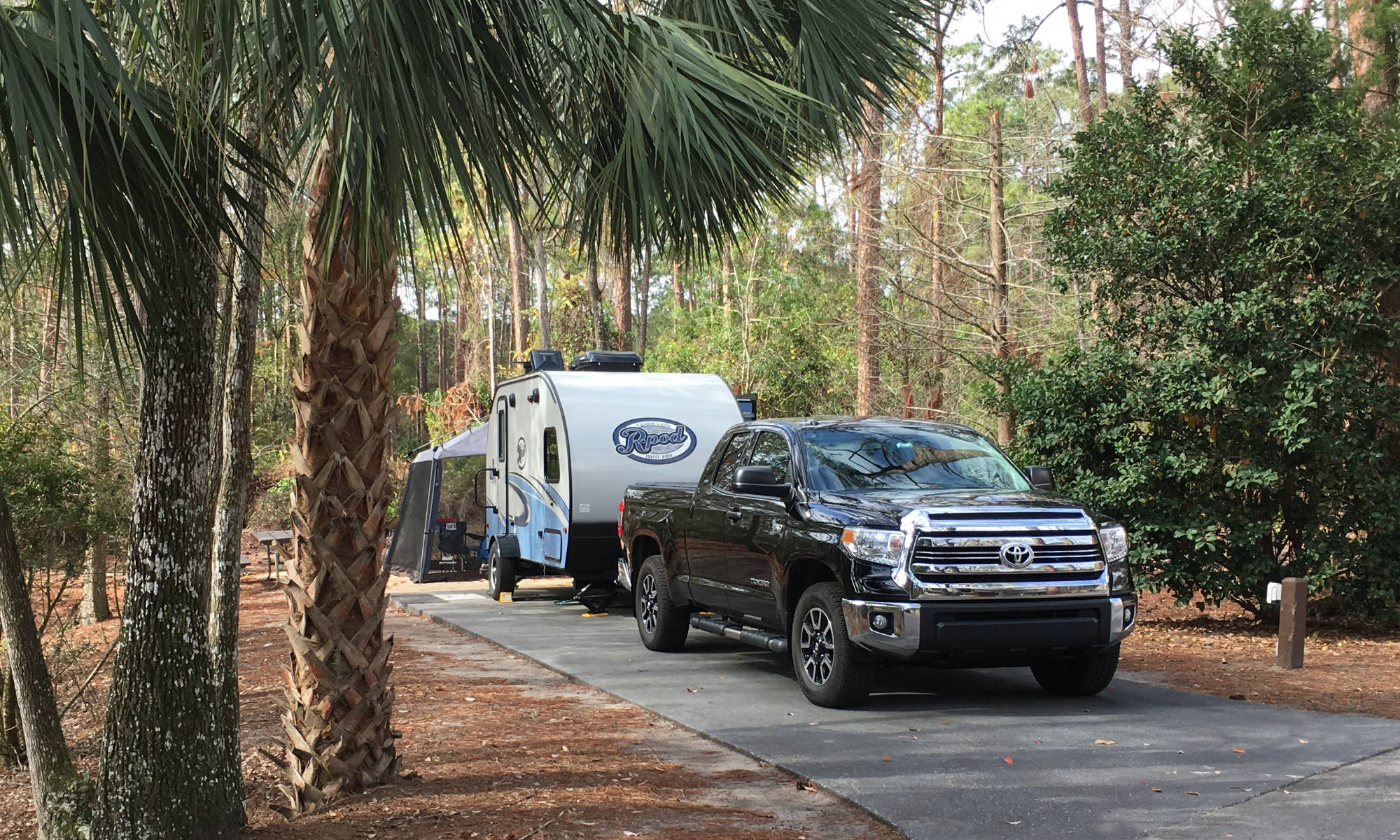In today’s blog, we’ll cover the latest RV and travel data as well as details about the new Starlink mobile internet service specifically for RVers.
This Month’s Big Story
I have camped in many places where I simply don’t have reliable internet service via my cellular network. This is especially troubling when trying to work remotely. I have been keeping my eye on Starlink satellite internet service and a few months ago decided to try it out. For several months now, I have been on a waitlist for the residential service because of where I live, and was planning to use this while traveling. Recently Starlink added a roaming feature to this residential service, and just this week, they launched a new RVing service. With this launch, Starlink emailed me to let me know I could cancel my current order and step over to the RV service and receive my unit immediately versus waiting an undetermined amount of time on the waitlist. I did this and am expecting the Starlink equipment to arrive shortly.
So, let’s take a few minutes and answer some basic questions about the service so you can see if it is right for you.

So, what is Starlink?
Starlink is a high-speed satellite internet service provider started by Elon Musk that uses thousands of low-earth-orbit satellites to broadcast internet service. The service provides the consumer with a small satellite dish to pick up the signal at the user’s location.
What plans are available?
There are currently three versions of the service, two of which are non-commercial. The residential service is intended for stationary use and cannot be turned off, but a roaming add-on can be utilized at an additional charge. The second version is intended for RVers. This version was made public on May 23rd, 2022. The RV version is the same price as the residential with the roaming add-on, but the service can be toggled off when not being used.
There are service differences between the residential and RV plans. The residential plan being used at the registered home address has priority on bandwidth over residential plans with roaming enabled when the user is roaming. RV users are deprioritized in an area versus residential users.
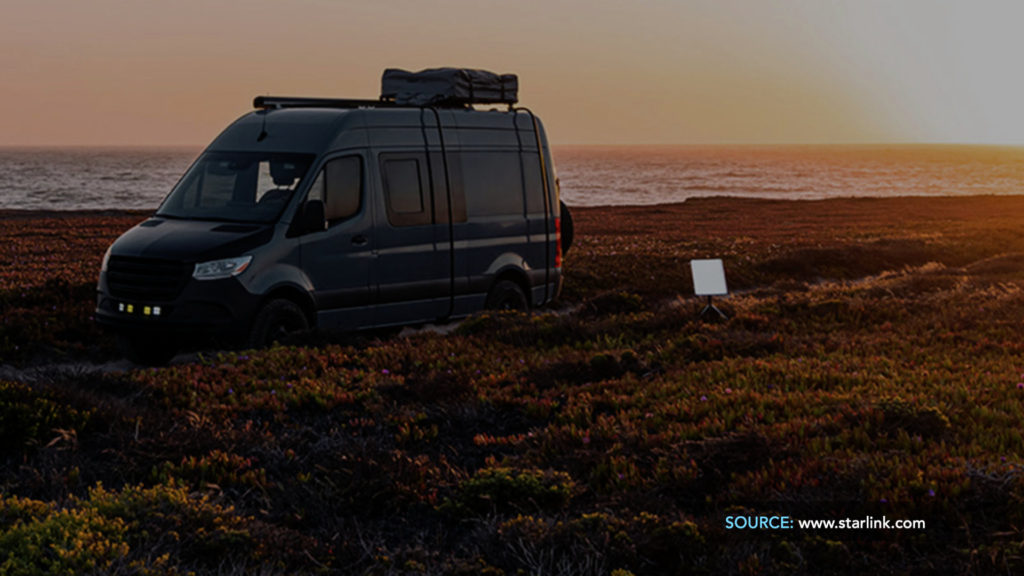
How does it work?
The individual dish provided by Starlink to the customer, called a “dishy,” once initiated, will locate a low-earth satellite, and connect to it for internet signal, given minimal sky obstructions. The dishy connects to the provided Starlink router by hard-wired cable provided with the kit. The customer then connects devices to the provided router for service.
How fast is the internet service?
Depending on sky obstructions and the geolocation of dish and satellites, high-speed signal is possible, including speeds of over 100 Mbps down. Speeds are dependent upon the volume of users in a specific area.

Where does the service work?
Potentially the service can work anywhere in North America or the world if there are satellites available to connect to. The potential for high-speed internet service is especially promising in areas where there is little to no cell service. This would make living and working remotely in various here-to-for unworkable areas now possible.
Can I turn the service off and back on?
The residential version of the service cannot be turned off at this time. The RV version of the service can be toggled off and back on, on a monthly basis.
How much does the equipment cost?
Whether using the residential service or the RV service, the upfront cost for the equipment is $599 plus tax.
How much does the service cost monthly?
As of late May 2022, the monthly cost for residential service is $110. If roaming is enabled, there is an additional $25 monthly charge. These monthly charges will be continually billed with no ability to toggle off the service.
The RV service is $135 per month with the ability to toggle off the service on a monthly basis.
So, there is the potential for considerable savings for the RV service because of the ability to toggle off the service. This only makes sense if you already have quality internet service at your home.
I should be getting my equipment shortly and will plan to test the RV service extensively as I travel. As I gather data, I’ll plan to report back on my ownership experience. My hope is to be able to work remotely from many places that currently have limited cell service.
Spotlight
This month’s spotlight is on the many free process documents available on johnmarucci.com. We have eighteen specific process documents that provide written instructions for things like RV winterization and de-winterization, backing into a campsite, dump station steps, restringing an RV window shade, etc. These documents align with the many accompanying videos on the same topic so that you have something written with you when you do the work on your RV.
Production Numbers
This week the RVIA posted the latest RV shipment data for April 2022, and the numbers remain strong but have fallen off from March’s record month. Volumes of RVs shipped are at an all-time high for any April on record, with over 57,000 units shipped. As a point of reference, the next highest April on record was 2021, with just under 52,000 units shipped. A large portion of this record output is for travel trailers, as motorized RVs are subject to similar shortages as motor vehicles are currently experiencing. Besides expensive Class B camper vans, Class A and Class C motorhomes are down vs. prior years.
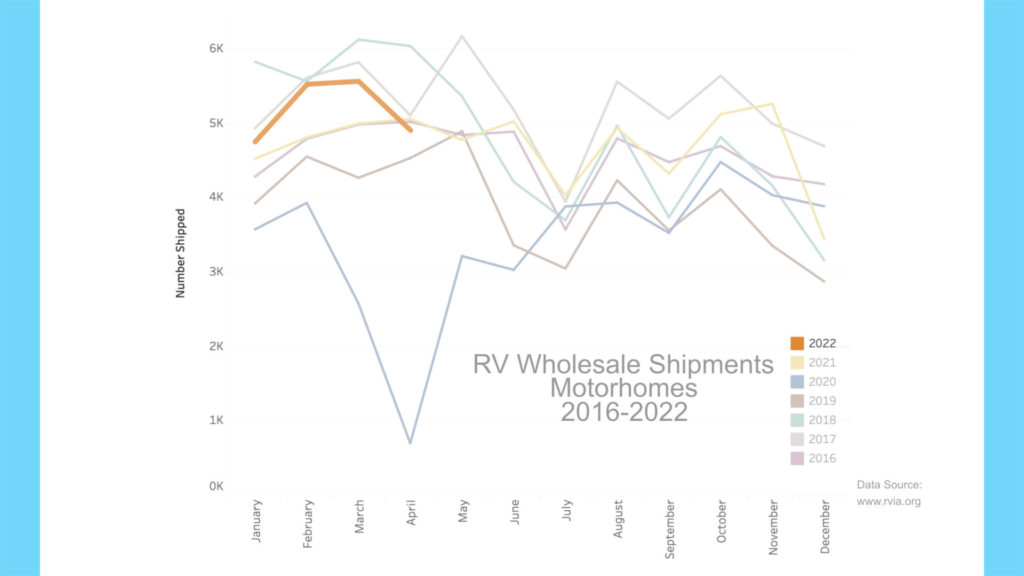
There are rumblings that RVs are stacking up on dealer lots with fewer people showing up to purchase them. In recent conversations with RV dealers, it seems like May is not turning out to be a great month for sales. There seem to be two main factors, there has been a very large number of sales in the past two years, forcing forward sales, and inflation is having a real impact. If so, then wholesale shipment numbers will likely fade quickly for May and into the summer.
RV Trader
New and used RVs for sale on RVTrader.com are historically high, with new units pulling back slightly this past week. There were 220,200 units for sale as of May 25th. This is down 6,800 or so units since last week with most of the drop coming from fewer new units for sale. For perspective, For-Sale volume is up 45,500 or 38% from the same time last year. Meanwhile, the number of used RVs for sale remains historically high at over 53,000 units. This time last year the number of used RVs for sale was only 33,900. So, there has been an increase of just under 20,000 used RVs for sale year over year.
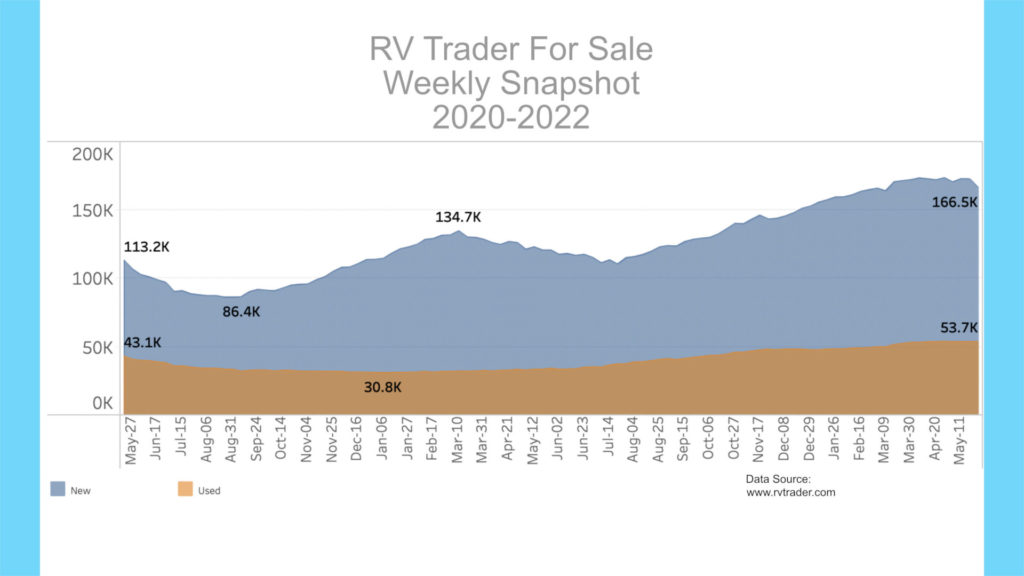
RV Quality Concerns
Meanwhile, manufacturing employment levels in Elkhart County, Indiana, continue at an all-time high, with 78,100 people employed in manufacturing in April. This gives Elkhart an ultra-low unemployment rate of only 1.4% for April 2022, making it very difficult to get and retain quality labor at many RV factories. If we see RV build quality in any way correlated to the unemployment rate, now isn’t the best time for consumers to buy RVs. As mentioned last month, if you are looking at buying an RV, you may want to consider using a certified RV inspector to help look at any prospective unit, new or used.
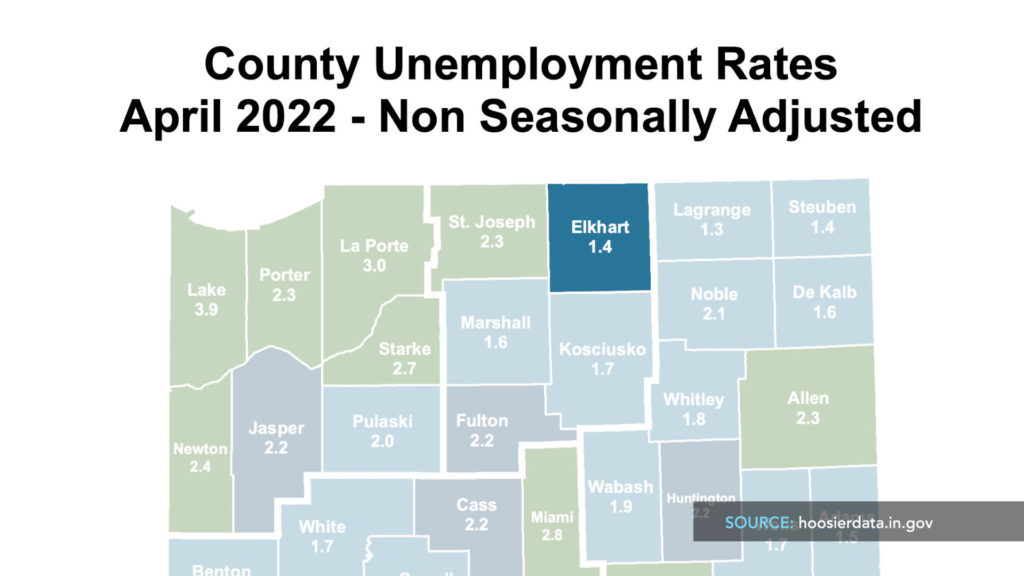
AAA
Gas prices are staying stubbornly high and haven’t retreated below the $4 mark nationally. In recent weeks the price of regular unleaded has actually increased. The current price as of May 28th was $4.601 per gallon, about 46 cents higher than a month ago and $1.56 higher than a year ago. An RV trip of 3,000 miles at 10 mpg would cost $1,380 now vs. $913 a year ago, about a 51% increase.

All the best in your camping endeavors!
As always, thanks to our fans who support our efforts by starting their shopping from our Amazon Storefront and by their generous financial support by using the THANKS feature located under each YouTube video ($ within the Heart icon). Your support is greatly appreciated!
